Международный опыт интеграции образования. Рубрика в журнале - Интеграция образования
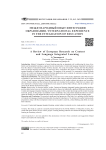
A Review of European Research on Content and Language Integrated Learning
Статья научная
Introduction. Subjects’ integration in formal teaching can play an important role in addressing the issue of authentic and meaningful learning as opposed to rote memorisation. Content and language integrated learning has been the subject of educational studies for three decades. The scope of research is broad, and from the primary focus on foreign language performance, it has been slowly extended to the impact of Content and language integrated learning on content and mother tongue. The purpose of the research is to summarize selected research articles on Content and language integrated learning application and to estimate its summary average effect on content development in a group of students aged 10‒16. Materials and Methods. The article presents the systematic review of the studies published in the Web of Science database in the last decade (2010–2020) and surveys the selected empirical studies that focus on the impact of Content and language integrated learning implementation on the content subjects at primary and secondary schools. Sixteen studies met the inclusion criteria and were included in the analysis. Data from six studies were also statistically evaluated using Comprehensive meta analysis and RevMan software, and the synthesis is presented in the Results and Discussion parts. Results. Based on the 16 discussed studies’ results, Content and language integrated learning intervention produces positive added value; however, the statistical meta-analysis showed no statistically significant differences between the Content and language integrated learning and non-CLIL groups in their content knowledge and the results favouring non-CLIL groups. As the groups’ size differed in terms of absolute value, the pooled standard deviation was used to reflect the sample sizes and standard deviation were averaged with more weight given to the larger sample groups. Discussion and Conclusion The practical significance and prospects of the study lie in pointing out the benefits of Content and language integrated learning and stressing the importance of its inclusion in teacher training study programmes along with the development of pre-service teachers’ creativity, critical thinking and ability to create their materials.
Бесплатно
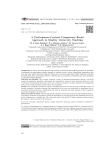
A performance-centred competency-based approach to quality university teaching
Статья научная
Introduction. In order to encourage more flexible working environments and establish generators of sustainable development for participating countries through an educated society, various international organisations that intervene in the quality dimension within the framework of a systemic approach to Higher Education, including the World Bank, have made multiple efforts to establish various recognitions, certifications and credits pertaining to competency-based education. Materials and Methods. The research, featuring a study of theoretical-interpretative design, was based around the qualitative paradigm. Information was obtained by means of semi-structured interviews with 14 lecturers from different universities in the city of Quito in Ecuador. The data obtained were triangulated with a review of the literature carried out by the researchers. Results. The informants considered cognitive competencies to be the most relevant within the context of teacher formation. Research, planning and organisation skills were not established in importance due to university professionalisation. Additionally, the need to establish curricular changes in the Ecuadorian university pedagogy was confirmed. Discussion and Conclusion. After contrasting the opinions of university professors and formation theories, a theoretical reflection is presented in which the importance of unifying professional formation and investigative competencies is emphasised. This unification allows the quality of higher education centred around the teacher as the main actor to be increased.
Бесплатно
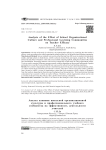
Статья научная
Introduction. The aim of the study is to find ways to expand teacher efficacy by examining how the teacher's efficacy varies according to the school organisation culture and the level of the professional learning community. Materials and Methods. Survey methods were used to collect the data from 400 in-service teachers at elementary, middle, and high schools in South Korea, with five schools selected from each region, respectively. This study utilizes the data from 359 teachers. This study used a random sampling method, taking the location of the school into consideration. Descriptive statistics were used to examine the overall trends in school organisation culture. T-test was used to examine differences among research variables depending on the personal background of gender and teacher level, and the F-test and Scheffe tests were used for school level and teaching experience. Results. First, school's organization culture is transforming and evolving into a more ideal and model culture. As schools increasingly transform into innovative schools, innovative cultures and group cultures gradually form. Second, a school is a type of organization system that elicits responses elicits a variety of responses from the teachers depending on their personal background and characteristics. Third, professional learning communities have a positive effect on teacher efficacy. Therefore, school organisation culture can be seen as a better predictor of teacher efficacy than a professional learning community. Discussion and Conclusion. The article is of interest to the managers of the school education system.
Бесплатно
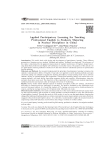
Статья научная
Introduction. This article deals with design and development of participatory learning. Three different perspectives: literature review, students' feedback and teachers' feedback were analyzed. The relevance of this study is determined by the apparent improvement of students' proficiency of English, deeper knowledge about their profession and higher self-confidence in and after classes. The purpose of this article is to use participatory learning methods to build a new and more effective educational process for professional English teaching. Materials and Methods. Our research implemented the principle of participatory learning to improve the students' communicative ability of English. Visual aids were applied to enrich teaching methods and open classroom setting was adopted to upgrade the learning atmosphere. Group learning mode was to cultivate students' ability of communication and cooperation. Theme-based teaching setting was carried out to encourage students' self-study ability, knowledge summary ability and creativity. Questionnaires, interview and peer observation were used. The objectives of the experiment were 50 third-year students majoring in radiation protection and nuclear safety at Chengdu University of Technology. Results. Survey results reflect different aspects of students' perception of the new settings, encountered difficulties in learning and new challenges for teachers. The positive feedbacks to the experiment were received from peer teachers. It is found that students of PLA group were more active, better performed in courses, and had an average increase of 8.18 points (total 100 points) in exams. Discussion and Conclusion. Our results and discussions lie in the smart connection between nuclear studies and English learning, and are based on varied qualitative research methods to verify the effectiveness of participatory learning. Through the analysis of the results, it can be seen that participatory learning has changed the traditional teaching mode to a certain extent and the nuclear major students were more effectively engaged in the professional English classes. It is, therefore, recommended to apply the research results to engineering related ESP practices at universities and colleges in China or in other culture.
Бесплатно
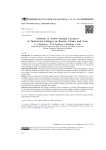
Attitude to labor among learners of industrial colleges in Russia, China and Iran
Статья научная
Introduction. A contradiction which we are able to observe over a few recent decades between necessity to participate in innovative processes and their natural stressogenic character has underlined the importance of developing programs for proactive organizational socialization which will be capable of building up successful behavior competences in VUCA environment in Industry 4.0. When self-actualization in labor is being devalued, attitude to labor is now considered as a key competence. Purpose: to reveal features of attitude to labor as a basis of professional socialization of learners studying at industrial colleges in countries which are now entering the new technological reality with a different degree of success: Russia, China and Iran. Materials and Methods. The analysis draws on the data obtained with WorkBAT method developed by J. Spence and A. Robbins, and their correlation with the values of organizational cultures which are characteristic of industrial colleges. The data on organizational cultures were obtained with OCAI method developed by C. Cameron and R. Quinn. Results. Russian students do not feel the changed nature of labor, their attitude to it is substituted by a wish to strengthen clan-based and loosen hierarchical components of the organizational cultures. Iranian students have a negative attitude to labor in a real hierarchical environment and a positive attitude to it in an innovative market environment, which suggests that they would be engaged and emotionally satisfied. Chinese students, having experienced specific organizational cultures of innovative companies in real life, have a positive attitude to labor in a hierarchical environment of stability and certainty. Discussion and Conclusion. The findings contribute to the development of scientific understanding of the role of value-based work readiness in the turbulent environment of a modern enterprise and the psychological mechanisms of proactive organizational socialization, taking into account socio-cultural country specificity.
Бесплатно
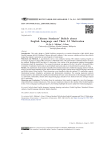
Chinese students’ beliefs about English language and their L2 motivation
Статья научная
Introduction. This study adopts a Global Englishes perspective to examine dimensions within beliefs about English language held by Mainland Chinese university students. It also assesses whether and how these beliefs impact the students’ motivation to learn English (L2 motivation). Materials and Methods. A questionnaire survey was conducted among 460 students learning English as a Foreign Language at a large public university in Mainland China. The questionnaire contained 28 items to assess the students’ language beliefs and their L2 motivation. One section of the questionnaire gathered demographic information about the respondents. The research instrument was approved by the University’s Research Ethics Committee. Exploratory factor analysis and multiple regression analysis were performed to analyze the data. Results. The Exploratory factor analysis identified four distinct dimensions within the language learners’ beliefs, namely, Beliefs about Standard English, Beliefs about Global Englishes, Beliefs about English language education and Beliefs about China English. Three dimensions were identified within the students’ L2 motivation, namely, International posture, Integrative orientation and Instrumental orientation. The ensuing regression analysis detected positive and statistically significant relationships between some dimensions in the language beliefs and L2 motivation. Particularly, Beliefs about English language education were found to have the strongest impact on L2 motivation. Discussion and Conclusion. The findings from the exploratory factor analysis support the views that language-related beliefs have distinct dimensions. They also give empirical evidence to the validity of the Global Englishes notion. From a language teaching perspective, the findings highlight the need to adopt GE-oriented pedagogies.
Бесплатно
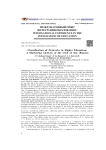
Classification of networks in higher education: a marketing analysis of the club of ten (Russia)
Статья научная
Introduction: the networking as a development practice in business has not yet become widespread. Moreover, there are very few studies of network interactions in the field of science and education. Advances in marketing evaluation of network entities are very rare. The goal of this article is to develop methodological criteria for such an assessment. These methods were tested on findings from the network partnership established by federal universities in Russia. Materials and Methods: to study and generalise real-world experience, a case study method was used, which the authors understand as an empirical research method aimed at studying phenomena in real time and in the context of real life. Results: the authors proposed a comprehensive methodology for estimation of networks. The application of this method of analysis enabled identification of the key problems and barriers to the implementation of the project. One of the main problems is the lack of marketing analysis, lack of understanding of its target audience, and, accordingly, the lack of a transparent vision of development. Besides, the authors have developed a classification of network partnerships. Т1Ю analysis empowers classification of the network of Russian universities as an inter-organisational polycentric partnership of a quasi-integration type, based on a neoclassical contract with relational elements. The analysis of the network development has revealed significant deviations of the results from the initially claimed ones. Discussion and Conclusions: the theoretical significance of the work consists in the application of the network theory to an atypical object for the economic theory, i.e. the analysis of the sphere of higher education. Practical significance lies in the possibility of application of results obtained through real projects in real-time mode. The results of the study are applicable to educational systems for practically all countries with a transition type of economic and educational systems.
Бесплатно
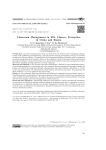
Classroom management in EFL classes: perception in China and Russia
Статья научная
Introduction. Classroom management has been one of the most vital fields of study of language teaching. It deals with establishing and maintaining a safe and positive learning environment, which is an essential condition for effective teaching. The rapid growth of the internationalization of education calls for comparing classroom management across countries. However, the comparative study of this aspect Chinese and Russian has long been delayed. The aim of this study is to examine the perception of classroom management in China and Russia regarding teaching English as a Foreign Language. Materials and Methods. In this research classroom management is defined by three fundamental aspects: instructional management in a traditional and online setting; behavioral management through discipline and timing; and behavioral management through communication and teacher-student relationships. A 5-point Likert scale questionnaire was implemented at both Chinese and Russian universities, three quartiles and Mann-Whitney U test were applied to the interval data. Results. By cross-culturally analyzing similarities and differences in perception of questionnaire items, it is found that generally, the perception of classroom management between Chinese and Russian respondents has more similarities than the distinctions. The authors also gave several practical recommendations to teaching staff for more adequate classroom management in China and Russia. Discussion and Conclusion. Understanding differences in perception of Chinese and Russian respondents at universities are helpful for teaching staff and students to understand each other's expectation, as well as stimulating new or modified strategies of classroom management. Potential areas of further research can cover the causes of differences and similarities in perception and practices of classroom management across Chinese and Russian culture.
Бесплатно
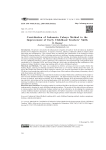
Contribution of Indonesia Cahaya method to the improvement of early childhood teachers' skills
Статья научная
Introduction. The article is devoted to the enhancement of quality of teachers' skills in Indonesia. Qualified teachers do not happen by themselves, it requires conscious, planned, continuous efforts to improve their knowledge and competencies. This research aims at examining the contribution of the Indonesia Cahaya Method to fostering teachers' skills, including motivation in teaching, learning management skills, presenting effective learning materials, preparing interesting and fun learning, developing teaching aids; creating a dynamic learning atmosphere. The Indonesia Cahaya Method is one of the most popular learning methods for early childhood education system in Indonesia. This method was developed through a longitudinal study conducted by Dr. Masnipal, M.Pd. and Onyas Rohayati, which aims at determining the contribution of the Indonesia Cahaya Method to improving teaching skills of early childhood teachers. Materials and Methods. The study was conducted as follows: giving a pre-test to teacher before the training began; carrying out training (treatment) for 8 hours (2 x 4 hours) with the help of the team, applying the method into learning in their respective schools in 6-8 weeks (minimum 30 and a maximum of 40 classes); and conducting a post-test by a colleague (one of the teachers at the primary/elementary school) with observations and interviews. Results. The research findings conclude that the Indonesia Cahaya Method has contributed to the improvement of early childhood teachers' teaching performance. The improvement of teachers' teaching skills can be seen in: teachers' motivation in teaching, skills in managing learning, skills in presenting effective learning materials, interesting and fun learning packaging skills, and ability in creating an atmosphere dynamic learning. In addition, the improvement of teachers' teaching skills was followed by an increase in students' participation in learning. Discussion and Conclusion. The training method is considered feasible to be followed, studied, developed and implemented in learning by early childhood education teachers. The results of this study add new references to various parties that the Indonesian Cahaya method can be an alternative in developing the competence of early childhood teachers and open up opportunities for further researchers to develop this method, especially at the elementary school level. The article targets primary school education managers and teachers.
Бесплатно
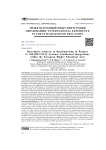
Статья научная
Introduction. The strategy for the development of international education ERASMUS 20.30 stimulates the study of how intellectual integration programmes are introduced into the system of further education of universities around the world. The research is relevant, for studying the integration of intellectual potential in a single space of higher and further education EHEA allows to determine the efficacy of application of world benchmarking technologies in the management of SMART/UNI-Q systems and the convergence of world universities. The EU Education Department conditioned the significance of the research content by the target request to investigate the change in the benchmarking mission at the international education market and to make a thorough informational review of its application in the international activities of universities in the EU, CIS and the Russian Federation for the dissemination of information by international partner universities of ERASMUS central office. The study aims at identifying general and specific indicators of sustainable international partnerships that affect consumer demand at the international education and labour markets by means of concretization of an extensive descriptive analysis of the intellectual integration benchmarking and the description of the processes of benchmarking technology application, its scientific identification and implementation in individual universities, university alliances and consortia. Researchers were looking for an answer to the question: why, with high interest and theoretical recognition of technology benchmarking in quality management, universities show low rates of benchmarking in assessing the quality of their international activities. Materials and Methods. It is the first time that the research of benchmarking intellectual integrations in the university international activities uses the method of descriptive analysis. The study identifies active sectors of the SMART / UNI-Q benchmarking for the entire set of data voluntarily submitted by the universities participating in the projects of the Austrian Institute for Intellectual Integrations in the pre-pandemic period of 2017-2020. The participating countries have analyzed the share of key participants and the share of published benchmarking studies. The study analyzes the changes in the benchmarking mission in the international education market in accordance with the needs of global consumers. The analysis uses the data of the bases of the EU Department of Education, the ETINED platform and open-access European dissertation reviews portals. The research uses the WERGELAND European Resource Center data as the comparison point indicators. The study presents an analysis of five segments of international benchmarking: transparency, diversity, “product line”, digital activity, and digital management tools. Modus infographics shows the real, improved and ideal models. The applied comparative analysis studies the asynchrony of academic mobility during the COVID crisis. Results. The research findings show low value of efficiency indicators for the use of intellectual integration benchmarking in the international cooperation of university alliances. The predominance and stable efficiency in the use of benchmarking takes place at certain universities in Europe during periods of activity in implementing new strategies of international education and only for a short time most often during the periods of university accreditation. The model for overcoming sustainable development asynchronies in the management of SMART/UNI-Q systems according to the criterion of guaranteeing the quality of higher education in international cooperation EHEA is not final and today it is possible to characterize it through descriptive indicators. Amid the economic crisis and turbulence associated with the COVID-19 pandemic, a decline in large-scale academic mobility is an inevitable trend. However, due to the growing difference in the responses of economies and management in the field of higher vocational education between developed and less developed countries, as well as with the strengthening of general trends in economic integration, the number of academic migrants is likely to increase. Asynchrony, that is, unevenness, of opportunities and adaptation to the new digital environment of university consortia and the possibility to implement the opportunities in practice has become a psychological problem of scientific migration. Discussion and Conclusion. The materials of this article will be useful to CEO-s of international universities, heads of departments of international activities, employees of ERASMUS national offices, coordinators of ERAS-MUS+ projects, departments of continuing professional education and academic mobility in the development of promising strategies for external and internal benchmarking of inter-university projects of intellectual integration and international activity quality management.
Бесплатно
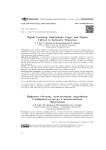
Digital learning, smartphone usage, and digital culture in Indonesia education
Статья научная
Introduction. The rapid development of information and technology has procreated a digital culture in Indonesian education. This article aims to depict the current condition of digital culture in Indonesian education by pointing at the issue of students' digital fluency, particularly the readiness for using digital learning resources and smartphone usage. Materials and Methods. A combination of the survey and qualitative descriptive method was used to identify the students' intensity of using a smartphone, the description of students' smartphone usage, and the students' perspectives regarding the smartphone usage in learning activities. The data were collected through questionnaires from 384 students in the first grade of senior high schools in Surakarta, Central Java, Indonesia. Results. The findings of the research show that the students regularly use the smartphone more than 6 to 7 hours a day. The students use the Internet to gather information or download the learning materials. Moreover, they strongly agree that smartphone usage will give benefits to them. Discussion and Conclusion. The findings of research reflect that the students engage with the smartphone as a device to support their learning activities. The students' engagement reflects the positive impact of smartphone usage on the psychological and cultural dimensions of the students. Moreover, the teachers should uphold the students' digital culture by integrating digital material resources and smartphone usage into classroom activities.
Бесплатно
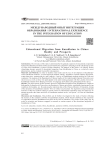
Educational migration from Kazakhstan to China: reality and prospects
Статья научная
Introduction. The relevance of the study is determined by the gradual expansion of educational cooperation between Kazakhstan and China and the need to identify the competitive advantages of the educational system of China over Kazakhstan's system of higher education. The purpose of the article is to identify factors stimulating dynamic growth of educational migration from Kazakhstan to China, as a relatively recent phenomenon, and to evaluate its possible consequences. Materials and Methods. In order to identify main trends and the way of development of Kazakhstan-China educational relations, we used empirical methods; namely: qualitative research method, description, expert interviews, content analysis, and synthesis. A survey of Kazakhstani students studying in China was conducted. The students of the Department of Chinese Studies of Al-Farabi Kazakh National University were interviewed, as well as those who participated in the joint training program with the Lanzhou University. Kazakhstani students from Beijing University of Language and Culture also participated in the survey. Results. The main reasons for the dynamic growth of educational migration from Kazakhstan to China are high quality of education in China, access to education in Chinese universities, comfortable learning and living conditions for Kazakhs, etc. By analysing the statistical data of the Chinese Ministry of Education, timing of the dynamics of Kazakhstani students' flows to China was presented. The legislative and governmental measures of the two countries aiming to create a basis for educational cooperation were also analysed. An attempt to predict the future activities of Kazakhstan students as the "soft power" of China in Kazakhstan was made. Discussion and Conclusion. This problem can be further investigated in the study of factors affecting the increase in the academic mobility of Kazakhstani students, which should contribute to the expansion of cooperation between Kazakhstan and China in the field of education. The results of this study may be useful to scientists and lecturers engaged in research on various aspects of the educational migration of Kazakhstan to China.
Бесплатно
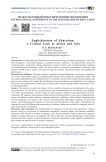
Englishization of education: A critical look at Africa and Asia
Статья научная
Introduction. Globalization has dramatically transformed existing educational paradigms, with English emerging as a dominant language in academia and the workforce. This phenomenon, known as “Englishization”, particularly affects educational systems in Africa and Asia through their adoption of English Medium Instruction (EMI). The article aims to explore the motivations, challenges, and impacts of EMI in these regions, focusing on linguistic identity, educational equity, and pedagogical effectiveness.
Бесплатно
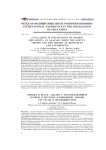
Статья научная
Introduction: the objective of this paper is to explain through the agency theory and theory of resources and capacities as is the process of assessment in higher education institutions. Materials and Methods: the methods used are the analytical and descriptive of the literature review on the issue of evaluation occurring in Institutions of Higher Education in Mexico. Results: the actors that are involved in the decision-making and the use that is giving the resources derived from repeatedly to practices that opportunistic diminishing the value that is given to the evaluation, in addition to the decrease in team work. After describing the background and delimitation of the problem, it is justified the aim of this paper which is to present an overview of how the evaluation process, the actors involved and conflicts that may arise as a result of that process. Discussion and Conclusions: as a theoretical background of this paper, it is supported by the agency theory and the resource and capabilities theory both from the field of strategy. The main conclusion argues that the evaluation of Higher Education Institutions in Mexico should be a tool to encourage continuous improvement. Self-evaluation becomes a key part of these processes, but this will be useful to the extent that stakeholders are aware of their actions, that there is a change of mentality less focused on control, money and the market, greater teamwork and knowledge generation applicable to the local context.
Бесплатно
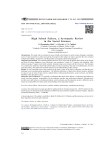
High School Failure, a Systematic Review in the Social Sciences
Статья научная
Introduction. This study aims to examine the issue of high school failure in social sciences through a systematic review. It aims to provide a critical assessment of research on this subject. It seeks to question the very construct of high school failure, its premises, and the possible consequences from this perspective. Materials and Methods. The research published between 2010–2020, both in Spanish and English in the Scopus and Web of Science databases (Core collection), was considered. A total of 171 articles were identified. After initial screening, 37 papers were finally selected. Semantic maps were created with the Vosviewer. The literature was examined to determine where high school failure is being researched, what type of methodologies are most used and, finally, what impact the research has had on our understanding of this concept. Results. It was found that most of the research on the topic is done in the field of education, and that the methodology used is predominantly quantitative. The different definitions of high school failure tended to attribute its cause to one or more of four reasons: student failure, multicausal phenomena, social exclusion, and finally, disability in the education system. Discussion and Conclusion. It is possible to understand that high school failure is understood and defined as mostly involving studentsʼ responsibility for the academic outcome and achievement obtained. Although studies that cover such factors as a multicausal nature, social exclusion, and the education systemʼs difficulty can be found, the responsibility for failure tends to be attributed to the individual student.
Бесплатно
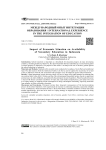
Impact of economic situation on availability of secondary education in Indonesia
Статья научная
Introduction. School transition is important as a benchmark for education progress in many developing countries, including Indonesia. Moreover, the school transition has been identified as a crucial turning point in school progress in Indonesia. The purpose of the article is to analyze the role of income, gender against the school transition in Indonesia. Materials and Methods. Methods in this research were conducted in two phases, fixed effect and conditional logit. The data used are from the Indonesian Family Life Survey and to capture the occurrence of several events in Indonesia with the risk associated with economic crisis in Indonesia against school transition. Results. A sharp permanent income decrease shock will have a larger effect upon parental investment than one realized later in the child's lifetime and the effect of permanent household income shocks is significant and decreases in older childhood, as predicted by the permanent income hypothesis. When household income is faced with shocks constraint conditions of loans and credit market imperfections, girls tend to be used as a coping strategy to support private consumption in doing consumption smoothing, especially transition from primary to junior secondary education. Discussion and Conclusion. Permanent income have long-term consequences of the decision-making process in the school transition. Girls experienced an increase in continuing education, especially at higher levels. Furthermore, when household income is faced with shocks constraint conditions of loans and credit market imperfections, girls tend to be used as a coping strategy to support private consumption in doing consumption smoothing.
Бесплатно
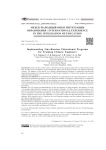
Implementing Sino-Russian educational programs for training Chinese engineers
Статья научная
Introduction. The relevance of this study is determined by the gradual expansion of contacts between the PRC and the Russian Federation in the educational sphere and the need to improve the national education systems. The purpose of the article is to identify methodological problems in organizing Sino-Russian educational programs for training engineers for the People's Republic of China and to propose the optimal solution to these problems. Materials and Methods. In considering the problems of organization of the educational process for joint Sino-Russian educational programs, we use empirical methods: description, content analysis, comparison and synthesis. A survey of teaching staff and students was conducted. Students and teachers, who took part in the joint program of Saint Petersburg Electrotechnical University and Xuzhou University of Technology were selected to be interviewed. The survey also involved teaching staff and students of Jiangsu Pedagogical University. Results. We will suggest recommendations for the development of joint programs, the purpose of which is to prepare highly qualified engineers for the People's Republic of China. These recommendations will improve the educational process, the quality of the professional training of Chinese students, enhance their level of proficiency in the Russian language. Our results suggest that to improve the quality of training of Chinese engineers who receive two diplomas, it is necessary to take into account the motives of Chinese students, their cognitive style of learning, the used learning strategies and the national characteristics of the Chinese education system. Discussion and Conclusion. The results of this study may be useful to educators involved in collaboration activities between educational institutions of different countries. Following the proposed recommendations, we expect teachers in special subjects to easily write textbooks, including digital ones that suit the topical students' needs and enable teaching staff efficiency.
Бесплатно
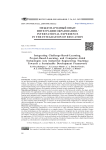
Статья научная
Introduction. Teaching industrial engineering in the second decade of the 21st century requires problem-solving and decision-making competencies oriented towards sustainable development. The growth of information metrics, the Internet of Things, virtual and augmented reality, and Artificial Intelligence bring more diverse, complex and imprecise challenges. This article aims to show a framework employing Challenge-based-learning, Project-based-learning and Computer-Aided technologies as dynamic resources supporting the comprehensive teaching of industrial engineers for industrial solutions oriented towards sustainable development. Materials and Methods. Our research involved a systemic analysis of the framework variables, the stages, and the partial results of its application in three academic years research. We selected several case studies to evaluate the professional competencies related to Sustainable Development Goals of industrial engineering students, using active learning tools integrated with Computer-Aided technologies. These cases illustrated the acquisition of Sustainable Development Goals competencies. Two simultaneous Latin American scenarios were examined (Mexico and Cuba). Results. Its main contribution is an appropriate framework for using Challenge-based-learning, Project-based-learning and Computer-Aided technologies as resources to develop professional competencies in industrial engineering and sustainable development. The control groups results demonstrate the utility, relevance, and accuracy of the proposed framework. Discussion and Conclusion. The study of the theoretical and methodological components of teaching Industrial Engineering, emphasizing competencies, at two universities in Latin American countries revealed the need to understand Computer-Aided technologies as a complex process. The proposed framework considers Computer-Aided technologies per the typologies of selected competencies integrated into the curricular design, including Challenge-based-learning and Project-based-learning, oriented toward the Sustainable Development Goals. The authors’ conclusions contribute to the development of active learning methods in engineering, supported by the application of CAD/CAM/CAE tools and focused on the fulfillment of sustainable development objectives. The materials of the article will be useful for the teaching of Industrial Engineering from a digital transformation perspective, contextualized in sustainable development environments.
Бесплатно
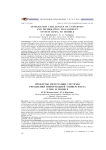
Integration challenges of university and information management system (UIMS) to Moodle
Статья научная
Introduction: in 2006 an International Ataturk Ala-Too University (IAAU) began to adopt internationally recognised Bologna system, which was initiated by the Ministry of Science and Education of Kyrgyz Republic because of problems of managerial and educational problems at universities in Kyrgyzstan. Consequently, IAAU had to improve its information and grading system and created University Information and Management System (UIMS), which was developed by the university professional team including the author. At the same time, the university began to apply a Moodle software, which delivers open source management system programs, in order to appropriately manage teaching processes and manage courses online. Materials and Methods: the methodological basis of the research are descriptive method, analysis, and comparison. Results: however, the IAAU faced some challenged issues in the application of the two innovation, which was the integration challenges of those Moodle and UIMS. Hence, the main purpose of this study is to demonstrate benefits of Moodle and UIMS linking challenges. at first, this paper informs Moodle functions, features, advantages and disadvantages in a shortly manner and UIMS management features and primary functions, which included six fundamentally crucial processes with some graphical representations. In addition, the analysis and methodologies of two systems through identifying advantages and disadvantages for the possible integration. Discussion and Conclusions: at the end, some challenged issues were identified from analysis results, also Moodle and UIMS benefits were demonstrated in the International Ataturk Ala-Too University.
Бесплатно
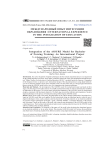
Integration of the Assure model for bachelor of nursing training: an international project
Статья научная
Introduction. The active integration of digital technologies into the modern educational process is an urgent task for the global education ecosystem. In this paper, within the framework of the joint international educational project “Digital Toolbox for Innovation in Nursing Education (I-BOX)”, conducted under the Erasmus+ Programme of the European Union, we present a new instructional design of the educational process using digital technologies on an electronic platform, based on the ASSURE model. The aim of the study is to design digital educational process using the ASSURE model with a view of its integration into electronic platforms. Materials and Methods. The development of the ASSURE model for instructional design was based on three stages. The first stage involved the analysis of available instructional models in order to determine the feasibility of application for the project. The second stage included the adaptation of the ASSURE model for instructional design as consistent with the project objectives. The third stage covered the definition and integration of modern digital technologies in the process of instructional design following the ASSURE model. Results. Based on the results of the study, the participants of the I-BOX Strategic Partnership Consortium developed an ASSURE model that can be applied for the instructional design in educational process when the use of digital technologies (video, audio, podcasts) and the placement of learning materials on an electronic platform are required. Project participants developed a guide “ASSURE MODEL: Conceptual Structure of the Project and Assessment” based on the results of the study with a step-by-step description of the ASSURE model for the e-learning process. The developed educational and audiovisual e-learning materials based on the ASSURE model will be available on the electronic platform. Discussion and Conclusion. The materials of the paper will be useful when designing the educational process on an electronic platform or in an online format. The presented ASSURE model will increase the possibilities and effectiveness of teaching students from different countries using digital technologies on electronic platforms.
Бесплатно

